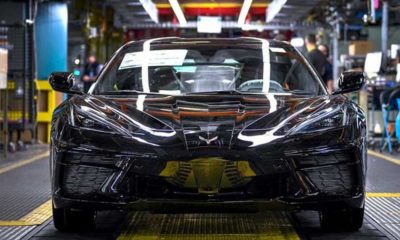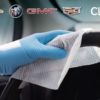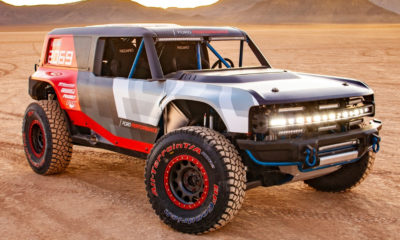Latest Car News
Self-Driving Vette Enables Quadriplegic Ex-Racer

Quadraplegic Adapted Corvette (Credit: © Falci Motorsports)
Ex-race car driver Sam Schmidt always marched to the beat of his own drum. Nevertheless, he spent three years racing IndyCars, with some degree of success; including being named Rookie of the Year in his inaugural season (1995), netting a win at the Las Vegas Motor Speedway event (1997), and finishing in the top five in series points (1999). His short racing career did not begin until the age of 31 and ended suddenly on January 6, 2000 when an off-season practice run crash at, at Walt Disney World Speedway, left him with a severed spinal chord. He was paralyzed from the chest down. Instead of giving up, Sam shifted his focus to IndyCar ownership and management where he has also experienced an extraordinary level of success, founding the Sam Schmidt Racing Team which has become the most successful team in the history of the Indy Lights series.
Later this month, during the days leading up to the annual Indy 500 race, Sam Schmidt will again get the privilege of driving a fast car around the Indianapolis Motor Speedway. Some 15-years after he last raced on this legendary track, known as the Brickyard, the latest in innovative automotive technology will allow Sam to garner control of a highly-modified 2014 Chevrolet Corvette Stingray and take a monumental leap towards advancing the protocol that could one-day allow other quadriplegic individuals to operate their automobiles, independently.
The specially designed and modified Stingray has been dubbed “SAM” which is short for “semi-autonomous motorcar.” Arrow Electronics, in conjunction with several other firms, have integrated the sports car with exclusive computer software, GPS tracking devices, computerized electro-hydraulic steering and braking inputs, and four infrared cameras. The infrared cameras are mounted on a specially designed hat, which the driver wears on his/her head. The cameras feed data to the computer driving control module by detecting various head movements. Steering is accomplished when the driver turns his head from left to right or vice-versa. The engine accelerates when the driver tilts his head backward and the brakes are activated when the driver tilts his head forward. This will take a little practice but you have to respect the overall simplicity of it.
Additional safety measures include numerous GPS sensors mounted near the four corners of the car. These sensors notify engineers if the car ventures closer than 1.5-meters from the edge of the track, allowing them to control the vehicle remotely or discontinue operation. This system allows Schmidt an area of approximately 10-meters in the center of the track, in which he is free to navigate.
Schmidt told the Indianapolis Star that safety was his first concern but that driving slowly, after his years of running faster than 200 mph, held little interest. He added that he had to be the one in control of the car and that he must average over 100 mph.
There is much more at stake than simply one driving enthusiast getting his kicks. If everything goes as planned, Arrow and the rest of the team will have demonstrated to the world how reliable and safe self-driving automobile technology can be.





























You must be logged in to post a comment Login